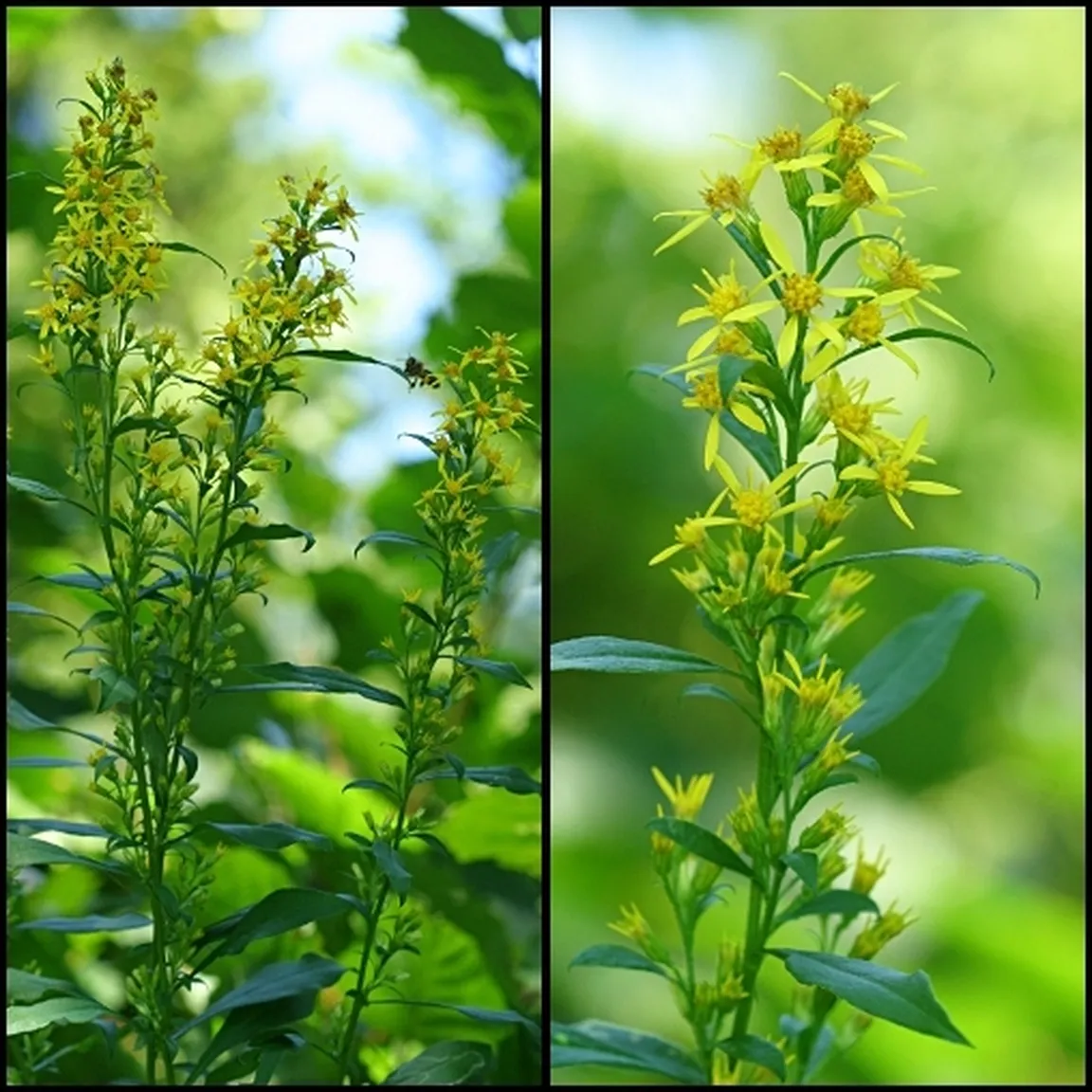Family: composites (Asteraceae)
Bloom time: July–October
Size: 30–100 cm
Habitat: sunlit forests, shrubs and clearings
The upright stem of the common goldenrod (Solidago virgaureae) is branched only in the upper part. The short-haired to almost bare stem is leafed with alternately arranged leaves that are three to four times as long as wide. The lower, obovate leaves are petiolate, the upper ones are narrow-lanceolate and sessile. Its bright yellow heads, which form a simple or branched panicle inflorescence in the upper part of the stem, consist of tubular and ligulate flowers. The heads are 7 to 18 mm long and 10 to 15 mm wide.
It is known for the use of common goldenrod to relieve health problems, such as inflammation of the urinary and respiratory tracts and to ease digestive disorders.
Common goldenrod is a self-seeding (native) species that grows on moderately nitrogen-rich, moderately acidic, moist soils rich in humus; it prefers partial shade. In Slovenia it is widely distributed, a common species.


